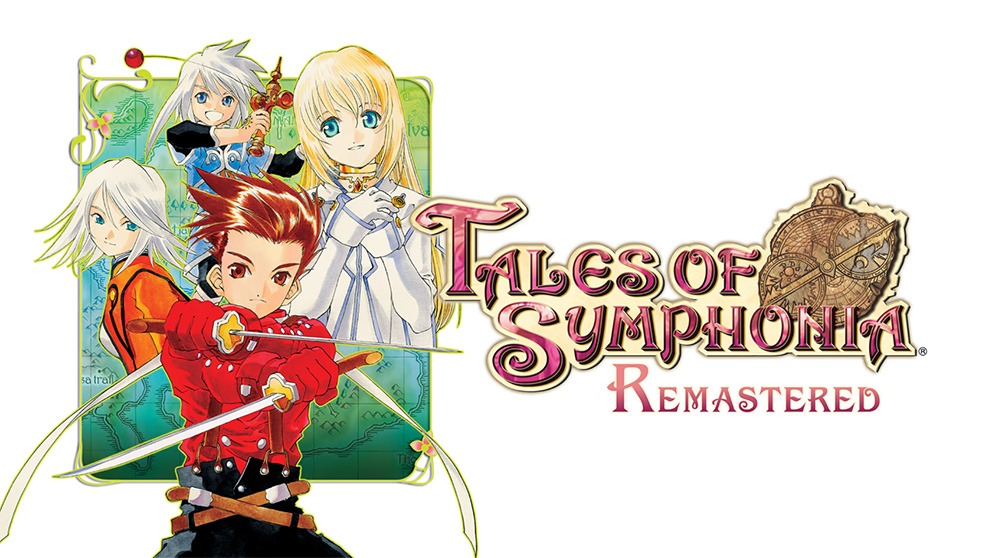You'll love it if:
- You’ve never played Tales of Symphonia before
- You’re looking for a meaty, 100-hour JRPG
- You like stories that can balance quirkiness with heavy themes
- You don’t mind simplistic combat and customization
Not for you if:
- You already own Tales of Symphonia
- You don’t like the combination of hard crashes and no auto-save features
- You expected a 20-year-old game to run at 60FPS, or at least stable 30FPS
- You were hoping for some new features or additional content
The Tales series is one of Bandai Namco’s flagship darlings. Starting in 1995 with Tales of Phantasia, the series has had a consistent output of creative, enjoyable titles over the years. With each new entry bringing new gameplay innovation and a brand-new story and world to explore (with a few direct sequel exceptions), the series has garnered quite a cult following. Enter Tales of Symphonia, a 2003 game released on the Nintendo Gamecube.
With it, the series finally made the jump to 3D and brought the Tales games to the spotlight. Due to how popular it became, however, the publisher Bandai Namco decided to re-release the game multiple times since then. Their latest effort to do so in the form of Tales of Symphonia Remastered isn’t a triumphant return for the Tales series as the fans might have expected it to be. Developed by Bandai Namco Entertainment Romania, this release is little more than a port, and in some ways, it’s inferior to the versions we’ve already played over the years.
Before we get into it, it’s worth noting that Tales of Symphonia Remastered is not a direct port of the Nintendo Gamecube original. Instead, the original was ported to the PS2, which lowered the game’s FPS from 60 to 30. Every version since then has been based on the PS2 version, including the PC and PS3 re-releases. Given this version’s subtitle, fans were hoping for more with the 2023 release on modern platforms. After all, publishers like Square Enix have done it well before, like in the case of Crisis Core -FFVII- Reunion. So, how exactly does this game stack up against modern remasters and its past releases?
TL;DR
Underneath numerous technical problems, Tales of Symphonia Remastered is still a JRPG worth playing, especially if you’ve never experienced it before. However, it’s an inferior version of a game that’s already been released multiple times, making it a hard sell for both new and returning players.
Story – Making the World a Better Place
Tales of Symphonia Remastered takes place in the world of Sylverant, where mana has started depleting and the world is turning into chaos. To stop this, a Chosen one has to make a journey of regenerating the world to maintain its balance. You play as Lloyd, a friend of the girl who is the Chosen one, named Colette. Lloyd is a brash, charming kid with no worries in the world, until a fateful moment when he has to become Colette’s guardian on her journey.
The story starts fairly simplistically and it’ll be a couple of hours before the first revelations and twists blindside you. Tales of Symphonia Remastered will take you about 50 hours to complete if you only focus on its main story, with nearly double that if you want to tackle side stories. As with all Tales games, the main hook of Tales of Symphonia Remastered is its central characters. They all have deep motivations, backstories, and reasons to follow Colette on her journey and to ensure that she regenerates the world.
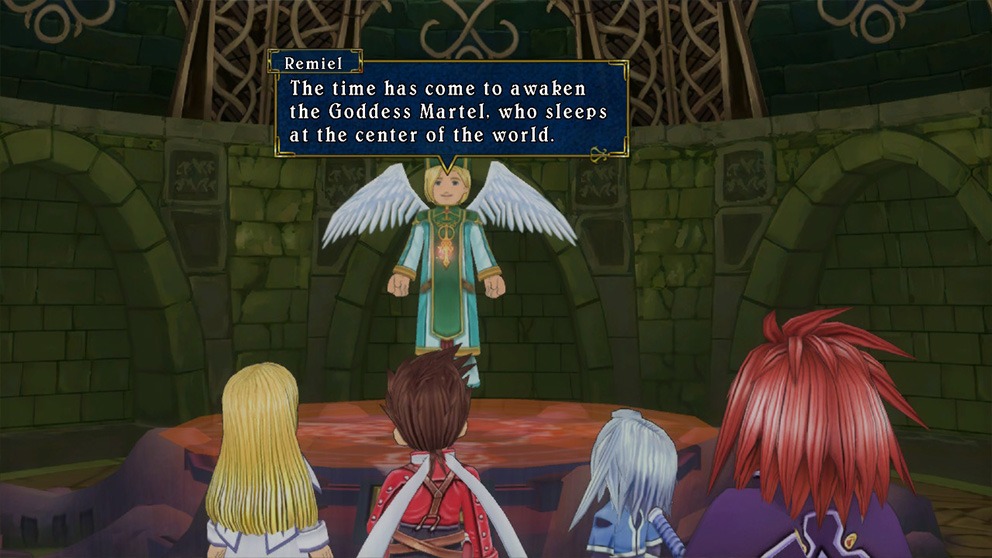
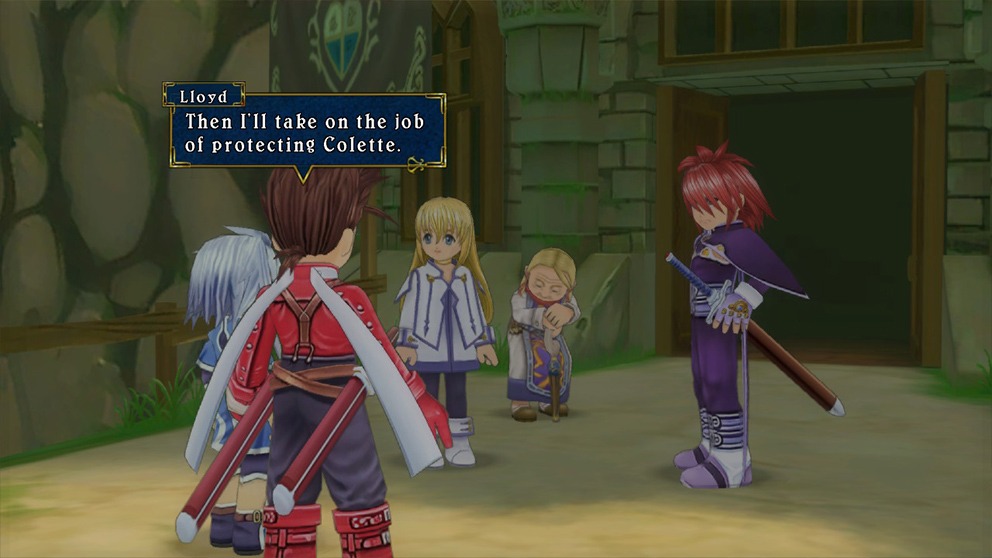
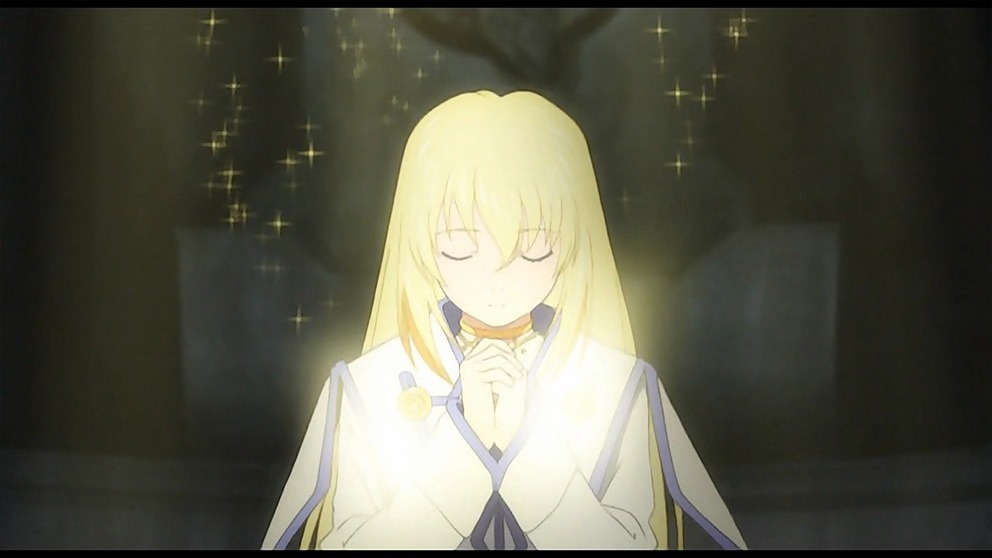
Refreshing Depth Underneath its Art Style
While the game does have a somewhat simplistic art style, its story doesn’t hold back any punches. Tales of Symphonia Remastered tackles war, religion, politics, and racism head-on. Its world is inhabited by humans, elves, dwarves, and others, and the game’s story makes the most of that diversity. As an example: there are “human ranches” where elves are holding humans as prisoners and using them as free labor in Sylverant.
Even if you’re not hooked by its art style at first, you’ll grow fond of its inhabitants after only a few hours with them. More than anything, you’ll care about the characters that tag along with you on the journey of world regeneration. This is in stark contrast to even some of the most recent games like Fire Emblem Engage which makes its central characters little more than stereotypes.
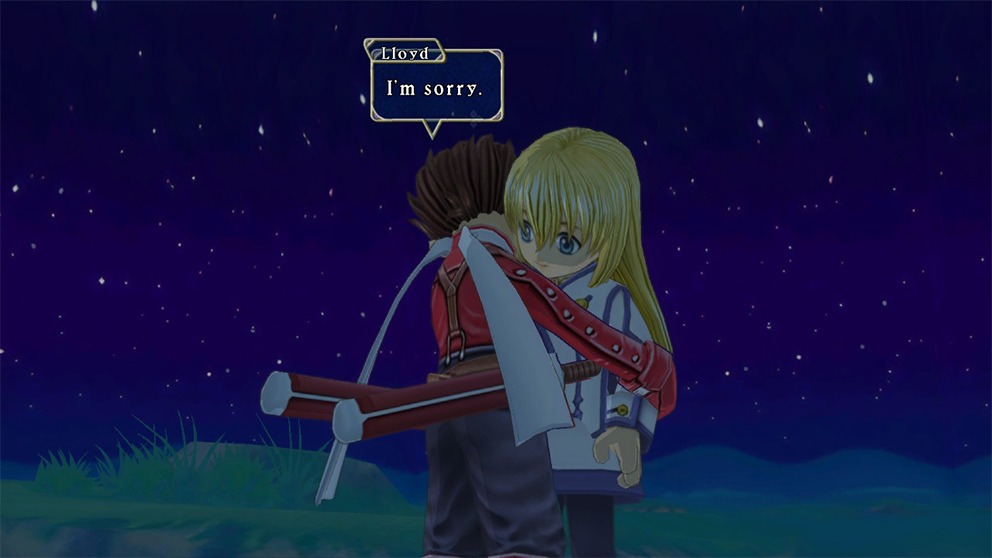
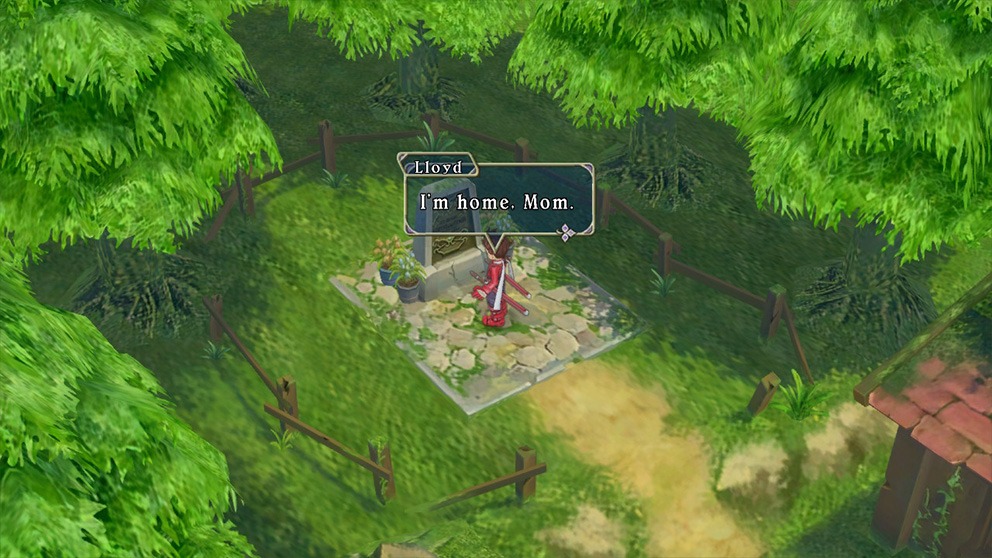
Gameplay – An Addicting Loop
The gameplay in Tales of Symphonia Remastered can be summed up in two words: fighting and exploring. While the game doesn’t have “random” battles per se, enemies will charge at Lloyd every 10 seconds or so and initiate combat regardless of whether you wanted to or not. Battles occur in separate horizontal screens where you’ll control Lloyd and a party of three more members of your choice.
Some story missions will force you to choose specific characters but you’ll mostly be free to make your dream team in Tales of Symphonia Remastered. You’ll earn EXP from battles which will translate to higher levels and more Techs, or skills, for your party. Fortunately for Tales of Symphonia, its combat is very enjoyable, especially because encounters don’t last too long.
The game never overstays its welcome and always has a healthy forward momentum. While you can grind of your own volition, it’s never a must for your party to grow stronger than usual. The game’s bosses are truly challenging, however, asking you to micromanage your party and ensure that everyone is casting the right skills and using the right items.
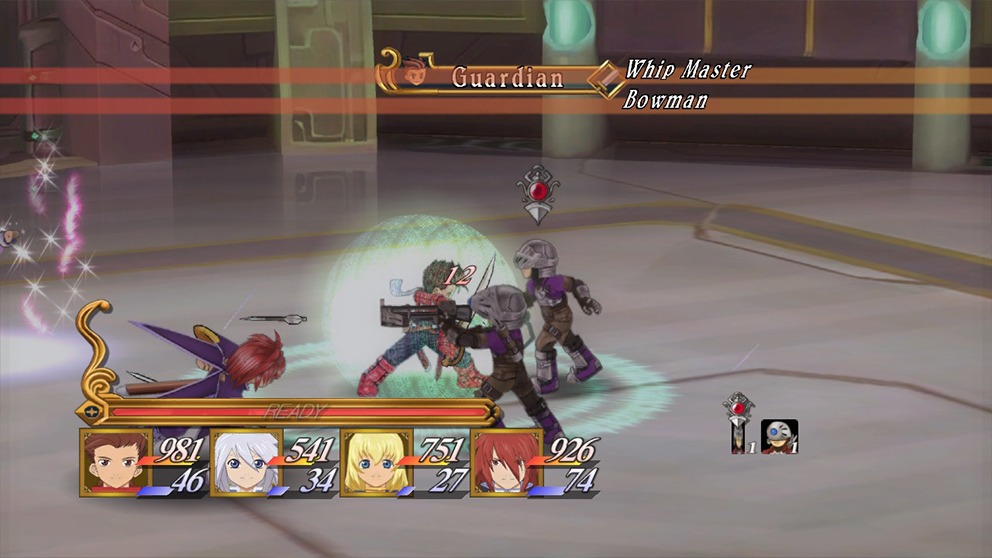
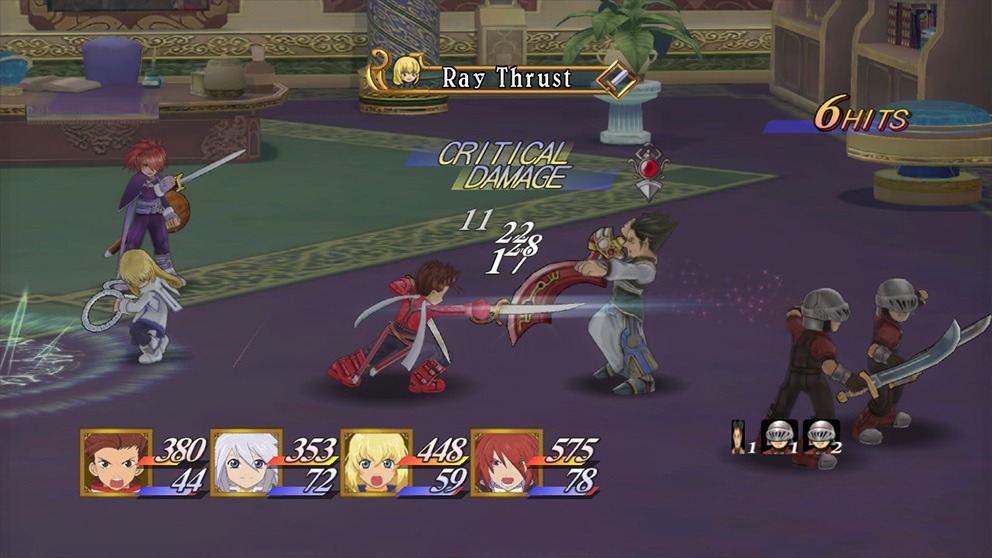
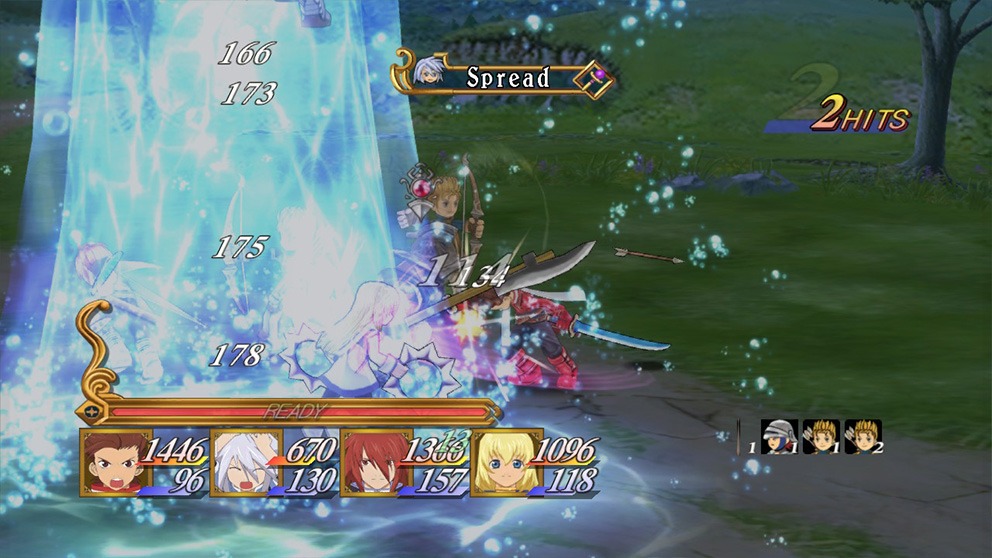

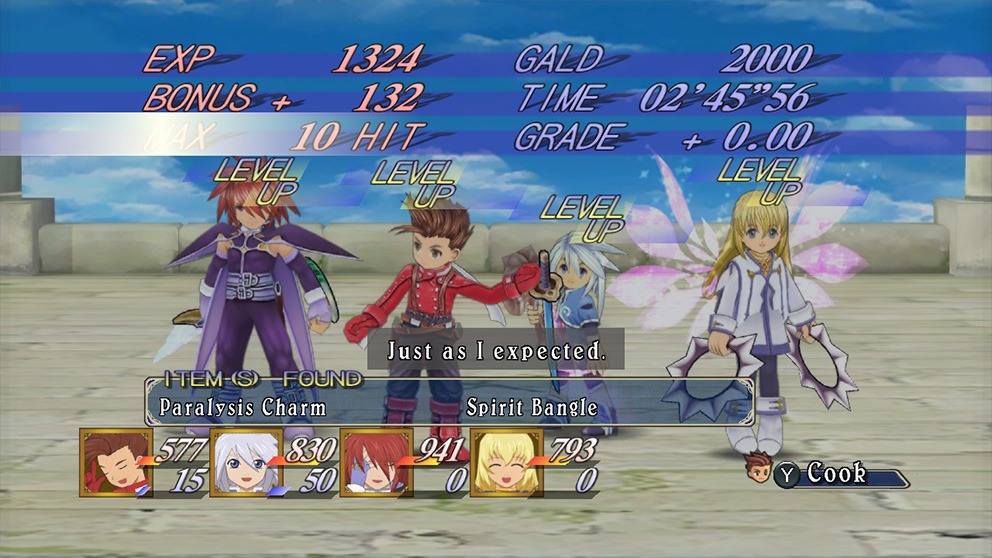
Exploring Sylverant
When you’re not fighting, you’ll be exploring the world with Lloyd as the leader of the party. Tales of Symphonia Remastered separates its exploration into two modes: overworld and location-based exploration. The game’s overworld is where you can grind for EXP and travel from location to location to follow the main story.
Once you enter a location, the game will present you with either a new town to explore or a new dungeon to tackle. It’s a fairly simplistic gameplay loop by today’s standards but it has its charm. It’s always a joy to enter a new location, immerse yourself in its design, encounter new enemies, and get a new piece of the overall story.
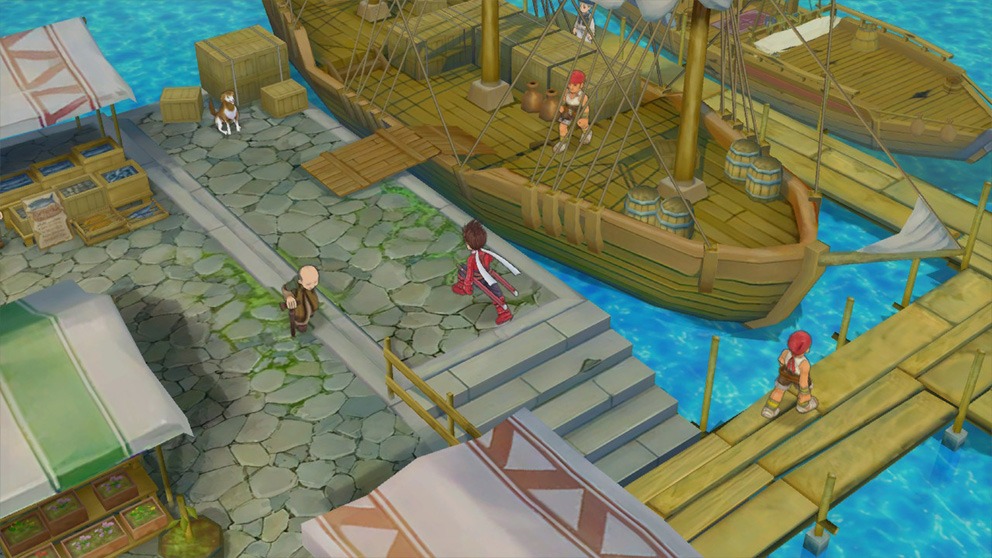

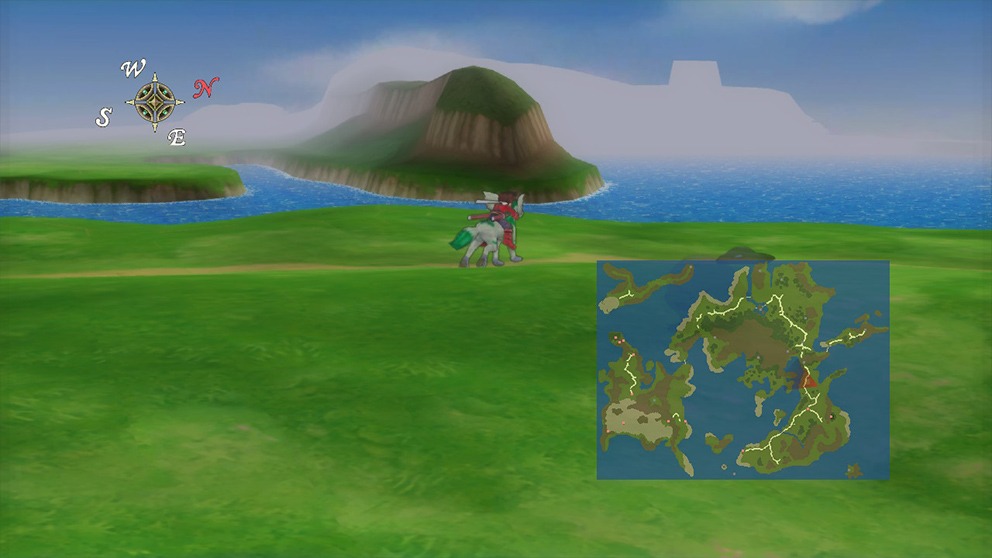
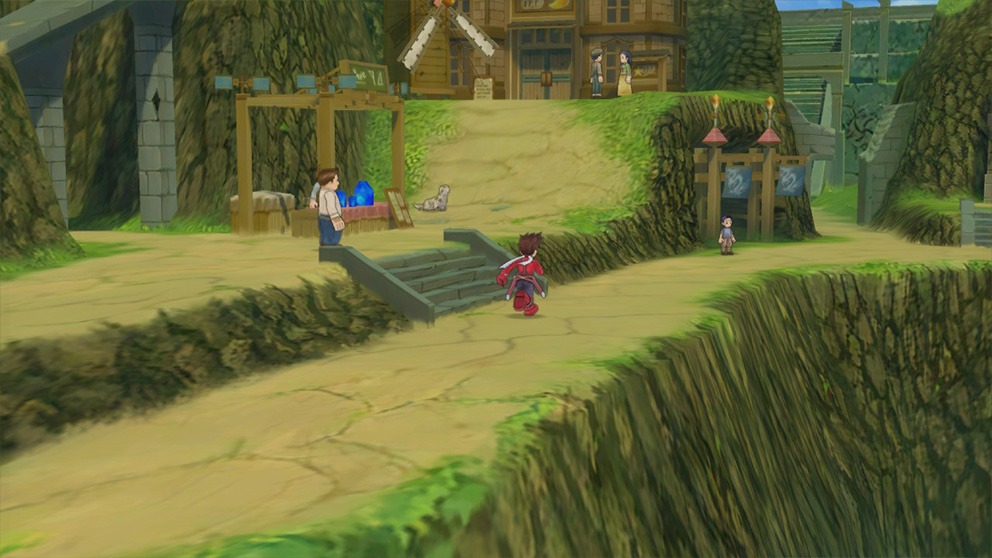
Very Little in Terms of Variety
For most of your playtime in Tales of Symphonia Remastered, you’ll be fighting or engaging in dialogue. There’s very little to do here besides follow the main story path and occasionally delve into a side story or two. While there are a few mini-games interspersed throughout, you’ll get to play them once or twice throughout the entire game because they’re location-based and often story-relevant.
Mini-games will often lead to new Titles for your characters which give passive stat bonuses and you can equip them one at a time. Besides fighting and exploring, you can upgrade your weapons (rarely, however) and look for hidden overworld treasures. While there is a New Game+ mode of sorts, you’ll still be playing with the same characters, moves, and equipment as you did the first time around, making a second playthrough somewhat arbitrary.
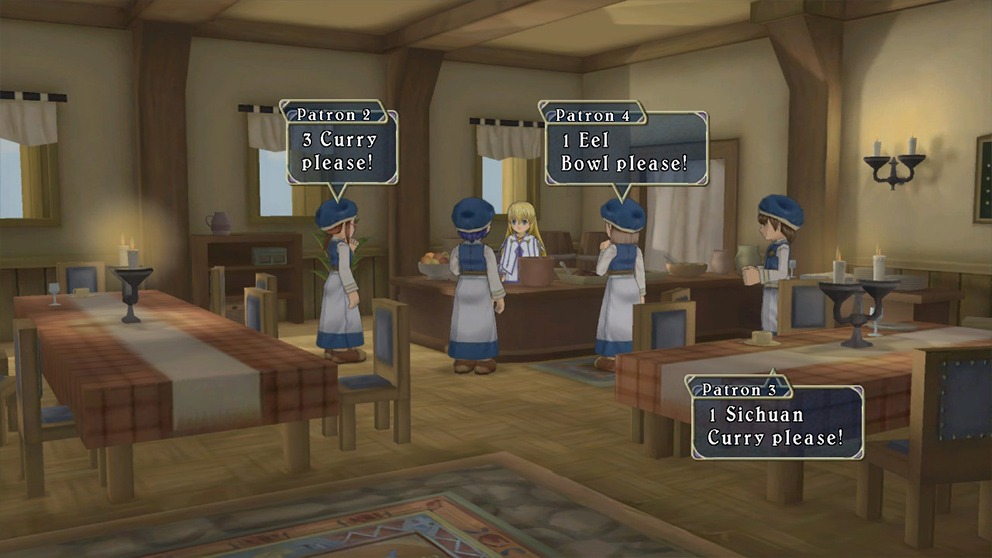
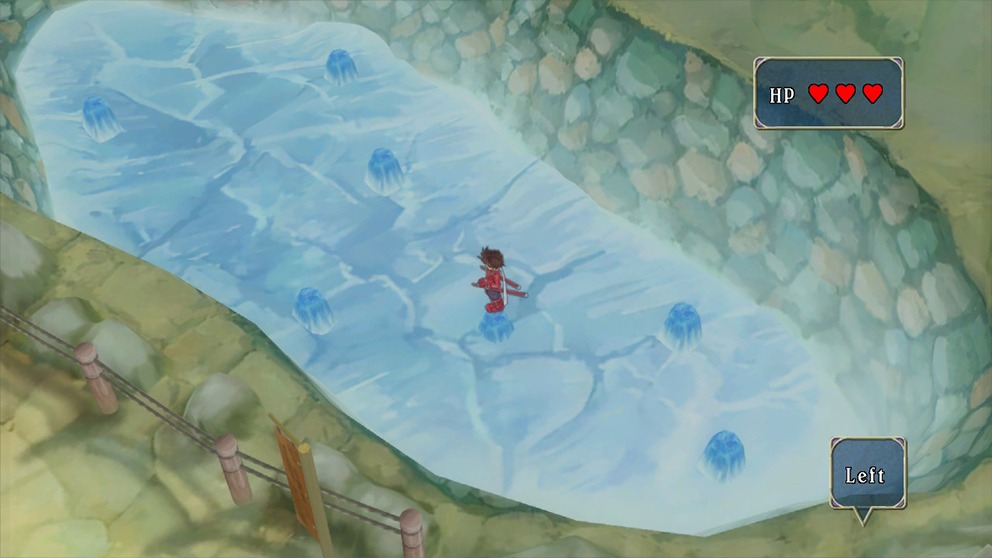
Visuals – Anime-Inspired Chibi Aesthetic
Tales of Symphonia Remastered owes a lot of its charm to the original’s art direction. Even if the technical performance is uneven, to say the least, the game still looks good, especially on the Nintendo Switch OLED. Its character design is the central attraction here, as you’ll notice that it sits somewhere between Chibi and more realistic anime designs. It’s a similar art style to what Tales of Vesperia would do a few years later on the Xbox 360 and it’s a look that the Tales series would keep until Tales of Zestiria.
As impressive as its character models are, however, the locations you’ll visit are just as impressive. Whether you visit the numerous villages and cities across Sylverant or delve into its many dungeons, you’ll quickly realize what makes the Tales series so appealing. Very few JRPGs have come close to the “traveling the world” feeling that the Tales games have managed to convey so well with each new entry.
Tales of Symphonia Remastered features the same overworld map design as its original 2003 release, for better or worse. In 2023, this map is too simplistic and oftentimes looks like a flat plain with a differently colored texture placed over it. However, this is something we have to accept since it is a 20-year-old game at this point.
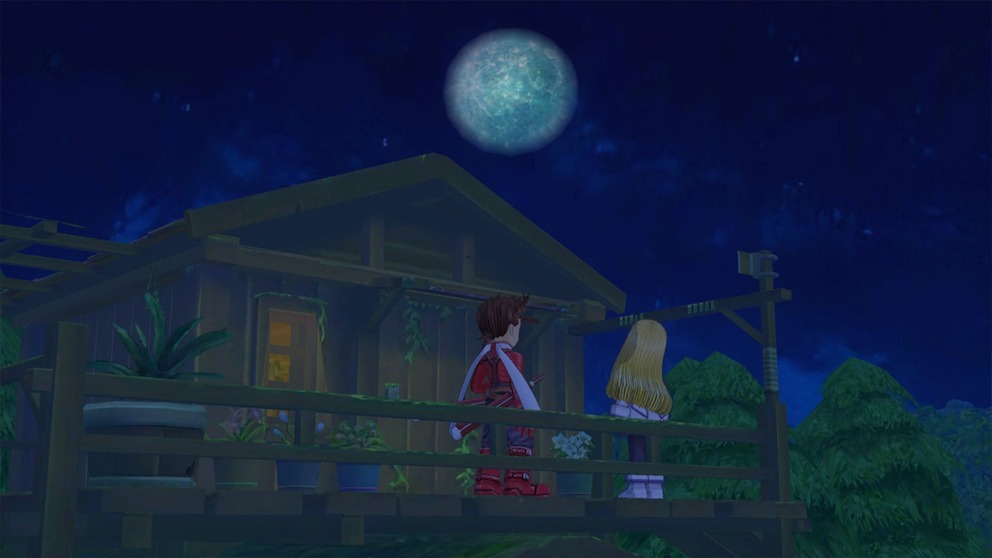
Technical Performance – Held Together by Duct Tape
There’s a lot to be said about Tales of Symphonia Remastered and its technical performance. We reviewed the game on the Nintendo Switch and tested it in both handheld and docked modes. The game targets 30FPS in both modes, with 1080p resolution being advertised as standard across all platforms. However, it rarely hits the 30FPS target, especially during battles. In a JRPG with random encounters, this makes the game somewhat unplayable, as it’ll drop to single-digit FPS whenever skills are used.
Worse yet, the game is prone to random hard crashes which will often lead to loss of progress because the game has no auto-save functionality. The game’s loading times have also been dramatically extended, especially when exiting random battles. You’ll wait about 5 seconds every time you complete a 30-second encounter in a dungeon or the overworld map, which can lead to frustration.
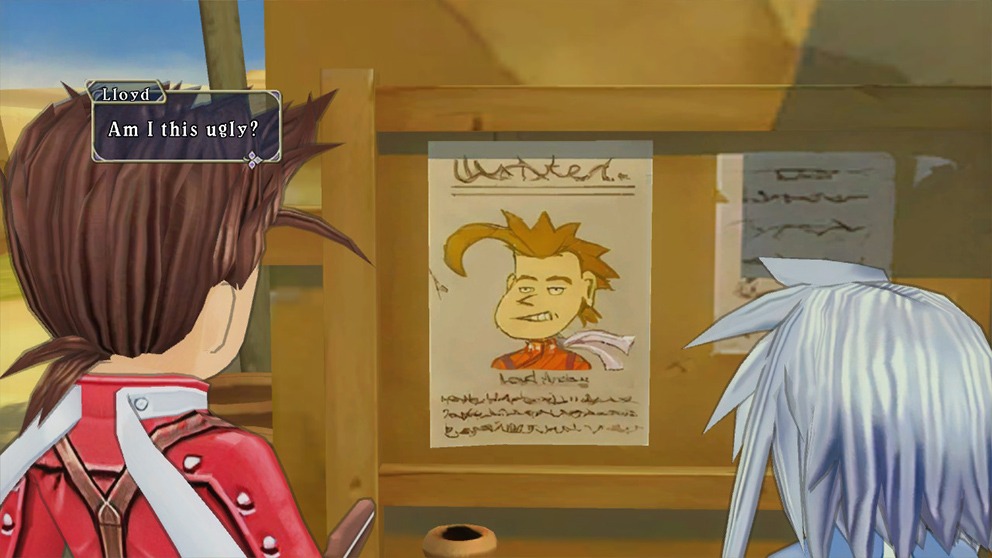
It Looks and Feels like a Demaster
Tales of Symphonia Remastered is missing many animations, menu transitions, background effects, and other bells and whistles that made the original so charming. Whenever you open your inventory screen, or whenever iconic Tales skits play, you’ll be met with a black background void of any texture. Battle transition animations are also missing, and you’ll now be met with a blinding white flash across the screen instead of the series’ staple glass-breaking animation.
The developers decided to use AI upscaling to make the game look “good” in 1080p, to mixed results. The game isn’t ugly by any means – it’s carried by its original art style and presentation. However, this is arguably the worst way you could experience Tales of Symphonia, at least until a patch or five drops somewhere down the line.
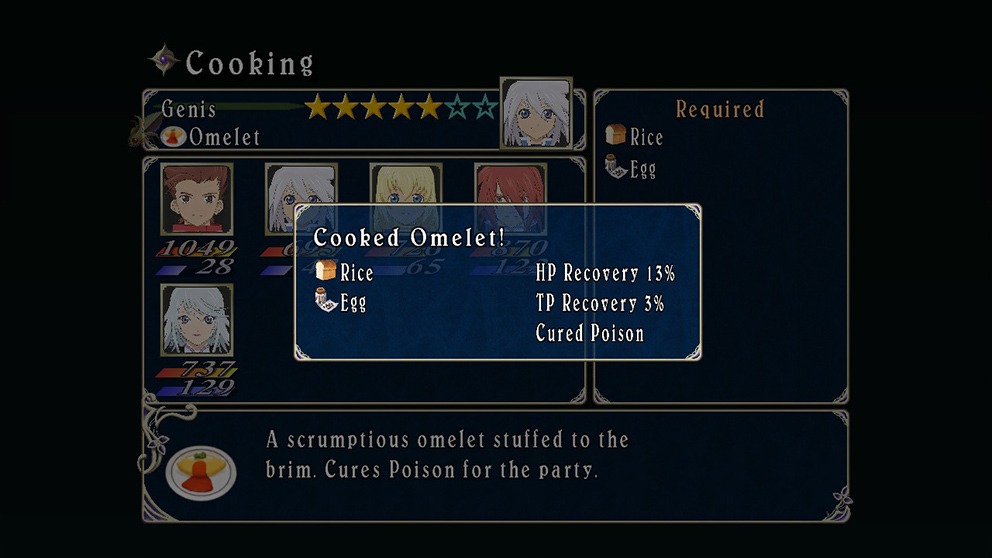
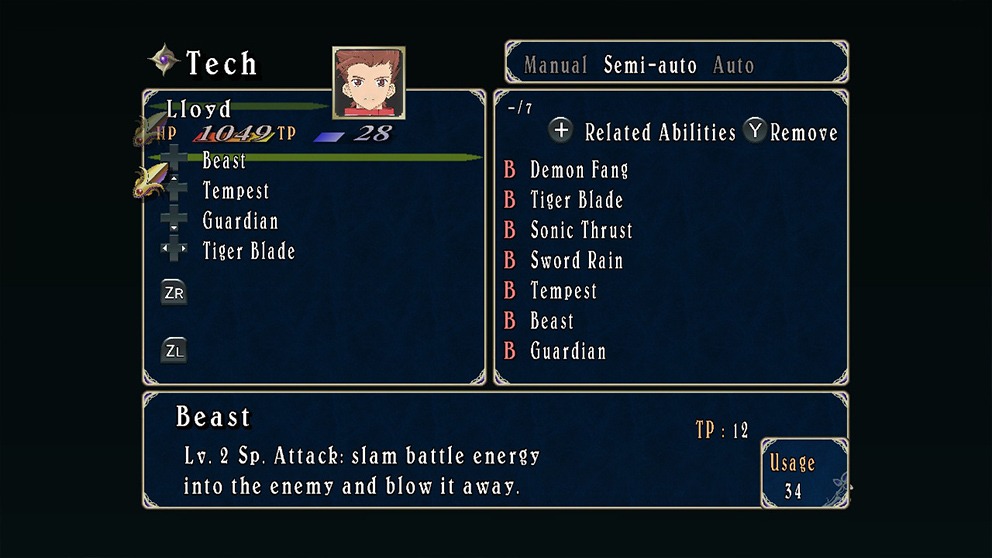
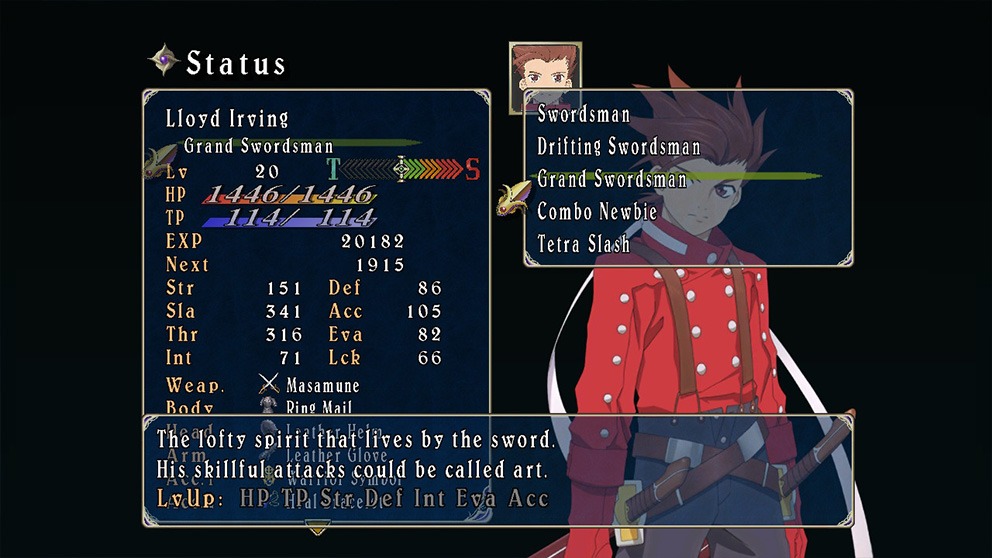
Audio – Mired by Heavy Compression
Tales of Symphonia Remastered sports heavily compressed audio across the board. Despite the old-school feel of its sound design and some truly iconic tracks, the audio simply isn’t very good. This might be attributed to the fact that the game is a port of another port of the game that came out in 2003. If the developer decided to base Tales of Symphonia Remastered on the Nintendo Gamecube version, the results might have been better. However, that version didn’t have wide-screen support, so with Tales of Symphonia, it’s a game of pros and cons in terms of which version to play.

Surprisingly Good Voice Acting
On the other hand, Tales of Symphonia Remastered has very good voice work, which is a rare sight for JRPGs. You can play the game with both English and Japanese voice acting, and the English ones are very well done. Each voice fits its character and doesn’t sound out of place, and you can hear the growth and character development they each go through throughout the game.
Whether you choose to play with English or Japanese voices, you won’t make a mistake and you’ll enjoy your time with Lloyd, Colette, and the crew. However, Tales of Symphonia Remastered doesn’t feature voice acting in its skits, the moments where characters chitchat during exploration. This means you’ll have to get used to reading these segments, which isn’t a big deal but it’s worth noting nonetheless.

Should you Play Tales of Symphonia Remastered?
Tales of Symphonia Remastered is a perplexing release. In the age of remasters and remakes, developers have learned to put a bit more effort into reviving the games people know and love. Unfortunately, that isn’t the case here. The game is riddled with glitches and technical performance issues, especially on the Nintendo Switch.
You should play Tales of Symphonia. But, you might want to pick up one of its previous releases if you haven’t played it before. Or, you could go for a more modern take on the Tales series with Tales of Arise, Tales of Vesperia, or Tales of Berseria. Until the issues plaguing this release are amended, it’s going to be tough to suggest to anyone that they should pay the full price for this release. Tales of Symphonia Remastered is available on PS and Xbox platforms, as well as the Nintendo Switch.
Big thanks to Bandai Namco EU for providing us with the review copy!
